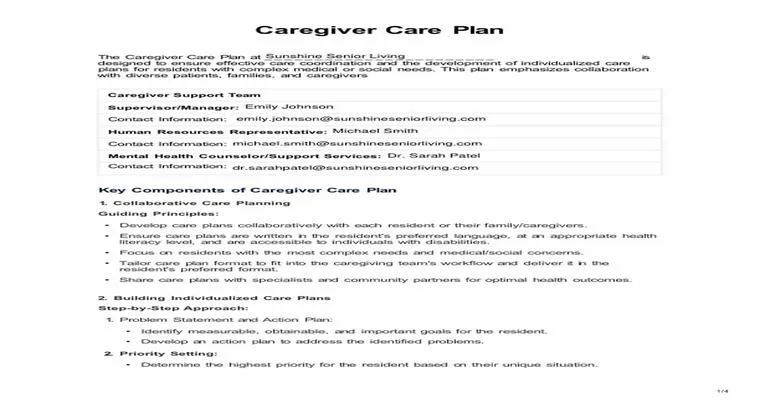Creating a "care plan for the elderly" is essential for ensuring their well-being and addressing their specific needs. A well-structured care plan can improve the quality of life for seniors by providing a clear framework for daily activities, medical care, and emotional support. In this article, we will explore the key steps to develop an effective care plan tailored to the elderly.
Assessing Needs
The first step in making a care plan for the elderly is to conduct a thorough assessment of their "needs". This involves understanding their physical, emotional, and social requirements. Take into account any "chronic illnesses", mobility issues, or cognitive impairments. Gathering input from healthcare professionals, family members, and the elderly person themselves can provide a comprehensive view of what support is necessary.
Setting Goals
Once you have assessed the needs, the next step is to set specific, measurable, achievable, relevant, and time-bound (SMART) goals. Goals might include improving mobility, managing medications, enhancing social interactions, or increasing independence in daily activities. Clearly defined goals will guide the care plan and help track progress over time.
Developing the Care Plan
With the needs assessment and goals in place, you can now develop the "care plan". This plan should include:
1. "Daily Routines": Outline daily activities such as bathing, meal preparation, and exercise. Consistency can provide comfort and stability.
2. "Medical Management": Detail medication schedules, doctor appointments, and any required therapies. This section should also include information on how to manage chronic conditions.
3. "Nutrition": Incorporate a balanced diet plan that meets the elderly person's dietary needs, preferences, and any restrictions.
4. "Social Engagement": Plan for social activities and interactions to combat loneliness and isolation. This could include family visits, community events, or online social networks.
5. "Emergency Contacts": List important contacts, including family members, healthcare providers, and emergency services. Ensure the elderly individual knows how to reach these contacts in case of an emergency.
Involving Family and Caregivers
Involving family members and caregivers in the creation of the care plan is crucial. Their insights and support can help ensure that the plan is realistic and comprehensive. Regular communication among all parties will facilitate adjustments as the elderly person's needs change over time.
Reviewing and Adjusting the Care Plan
A "care plan for the elderly" is not static; it requires regular review and adjustment. Schedule periodic check-ins to assess progress towards goals, address any new challenges, and make necessary modifications. This adaptability ensures that the care plan remains effective and relevant.
Conclusion
Creating a comprehensive care plan for the elderly is a vital process that enhances their quality of life. By assessing needs, setting goals, developing a structured plan, involving family and caregivers, and regularly reviewing the plan, you can provide the necessary support for elderly individuals to thrive. Remember, a well-executed care plan not only addresses physical needs but also nurtures emotional and social well-being, fostering a healthier and happier life for seniors.





